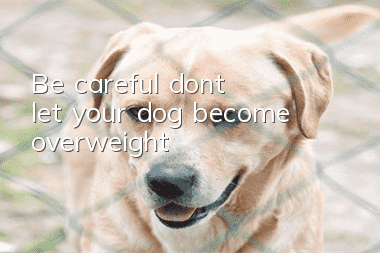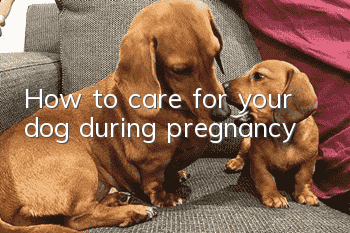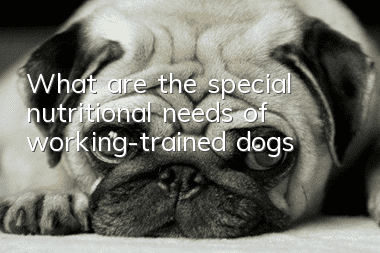Be careful, don't let your dog become overweight!

When the total energy intake in an adult dog's body is higher than its consumption, the excess will be accumulated in the form of fat. The incidence of obesity in today’s home-raised dogs is much higher than various nutritional deficiencies. It is generally believed that a dog that exceeds 15% of the standard weight is obese. In Western countries, 44% of dogs are overweight.
If you are not sure what the standard weight of a dog is, you can also use the following chart to determine it:
According to the picture above
Level 1: Extremely thin
Appearance: Visible ribs, pelvis, spine, no body fat or muscle mass
Touch: The bones somewhat cover the muscles
Level 2: Weight loss
Appearance: The ribs and pelvic bones can be seen, but not too prominent; the tip of the spine can be seen; an hourglass-shaped waist (viewed from above) and a clear abdominal line (viewed from the side) can be seen
Touch: There is no obvious fat on the ribs and other bones, but there is muscle mass
Level 3: Moderate
Appearance: Less prominent “hourglass” and abdominal line
Touch: There is no excess fat covering the ribs
Level 4: Obesity
Perception: The overall appearance is fatter, and the "hourglass" and abdominal line are difficult to see
Touch: Hard to touch the ribs
Level 5:
Perception: Abdominal sagging, large amounts of fat deposited in the chest, abdomen and pelvis
Touch: Nothing can be touched except flesh
Generally speaking, we believe that level 3 or 3.5 is a more appropriate level, and anything above level 3.5 is considered obese.
There are many reasons for dog obesity, the more common ones include the following:
1. The owner is too doting on the dog and feeds too much food and snacks;
2. The owner is too busy at work and neglects to walk the dog, resulting in insufficient exercise;
3. Genetic factors, short-legged dogs are more likely to be obese. Dogs whose parents are obese are more likely to have obese offspring;
4. Neutered dogs can easily gain weight if they fail to control their food intake and exercise.
Obesity will bring many health effects to dogs. First and most directly, it will put huge pressure on the bones of dogs, causing fractures, joint diseases, intervertebral disc disease and cruciate ligament rupture. It can also easily cause cardiovascular disease. diseases, hyperlipidemia, hypertension and other chronic diseases; the incidence of breast cancer in obese female dogs is also much higher than that of normal-weight female dogs; in addition, obese dogs require greater anesthesia during surgerydosage, thereby increasing the risks of surgery and anesthesia. Therefore, it is particularly important to manage your dog's weight.
Management of dog weight is mainly divided into two aspects. On the one hand, it is intervention through medical means, including treatment of endocrine diseases that cause dog obesity, and also including the use of digestive and absorption inhibitors or hormones to reduce intake and increase metabolic rate. Of course, such intervention can only be done in the hospital. For the owner, what can be done mainly lies in another aspect, namely lifestyle adjustment. This includes two parts, namely increasing the amount of dog exercise and reducing the amount of food fed.
For obese dogs, allowing them to do strenuous exercise is more likely to increase the risk of bone damage. Therefore, you should take your dog for exercise in a regular, planned and protected manner. You should take your dog for a slow walk for at least 30 minutes regularly every day, but try not to take your dog to run or play games like chasing a ball. If the dog is really not strong enough to complete the task, you should walk the dog for 30-50 meters, rest for a few minutes, and then continue walking for 30-50 meters. When choosing a venue, you should try to choose soft ground such as grass, avoid walking on concrete floors, and especially minimize the chance of climbing steps. If conditions permit, swimming will be the most suitable weight loss exercise for dogs.
Reducing the amount of food fed is a very important step. The calories of dog food will be marked on the packaging bags of regular dog food. The daily calories (kilojoules) required by a dog can be calculated approximately using the formula 600*W^0.75, where W is the standard weight of the dog. Through this formula, you can calculate the calories a normal dog needs in a day, and use this value to predict the amount of dog food you need to feed, and then feed it. If you don’t want to use this formula to calculate, you can also directly reduce the dog’s previous feeding amount by 40% before feeding it. When feeding, you can eat small meals frequently, 3-4 times a day, but do not give any food or snacks at ordinary times. At the same time, you can mix dietary fiber foods such as wheat bran or konjac into dog food to increase the dog's satiety.
Losing weight in dogs requires both the dog and the owner to make efforts at the same time. Pet nutritionists can provide professional guidance to better guide and help owners manage their dogs' weight, and even help them develop specialized weight loss plans and meals. If you are confused about losing weight for your dog, please contact a pet nutritionist near you.
Author introduction:
Jin Feng: National Senior Pet Nutritionist.
Founder of Wellfood, he is mainly engaged in the research and development of pet wet food and clinical nutrition research, especially specializing in the customization of pet nutrition programs in special periods;
Deputy director of petking Ace Pet Classroom Compilation Committee, leading the compilation and translation of pet majors and books;
Deputy Director of "Ace Pet Classroom Teaches You How to DIY Pet Food"Editor;
Petking Ace Pet Class Guest Pet Nutritionist;
He has worked for multinational pharmaceutical companies such as Pfizer, Roche, Bristol-Myers Squibb, and Eisai. Because of his love for companion animals, he switched from the pharmaceutical industry to the pet industry. Combining pharmaceutical industry background and pet nutrition major, committed to companion animal welfare;
Founder and keynote speaker of the "Wilford Dog Parents Meeting".
- How should female dogs take care of themselves after giving birth?
- Why is there redness around the dog's eyes?
- What should you do if your golden retriever has constipation?
- What are the benefits of neutering your dog?
- Treatment and Diagnosis of Dog Food Poisoning
- What medicines can be used for fungal skin diseases in dogs?
- Why should female dogs be sterilized? What should we pay attention to when neutering female dogs?
- What foods can pugs eat?
- What should I do if my dog’s limbs are weak and he can’t stand up?
- When is the best time for golden retrievers to mate? What should you pay attention to when mating?



